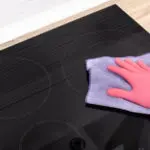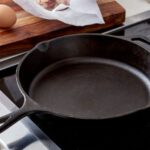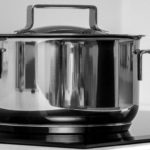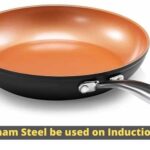Do Induction Cooktops Get Hot and Can Be Touched?

Induction cooktop at current is one of the most energy-efficient and cost-effective ways of cooking. This cooktop works by using an electromagnetic field that creates heat inside any kind of cookware, such as stainless steel or cast iron, placed on its surface.
The induction cooktop is also very easy to clean and maintain as its surface is usually smooth and flat.
Moreover, due to their fast heating capacity, they are perfect for anyone who needs quick results while cooking. They are also extremely convenient to use since they don’t require a lot of setup or maintenance
Still, there are many people who are confused and ask Do Induction Cooktops Get Hot?
The Answer is, Induction cooktops do not get hot like traditional stovetops. They use magnetic fields to heat the cookware directly, while the surface of the cooktop remains relatively cool to the touch.
How does an induction cooktop work? What is the scientific reason behind it
The reason behind how induction cooktop is that when an induction cooktop is turned on, it creates a magnetic field.
This magnetic field will then create currents in the metal of the pan or pot that is being used.
These currents will then cause heat to be generated, which will cook your food. The electromagnetic waves are transferred from the coils into the base of the pan, which then creates heat that cooks your food.
What are the benefits of an induction cooktop?
Some of the benefits of induction cooking include:
- Precise temperature control
- Even heating.
- No wasted heat.
- Cooler kitchen since there is no open flame.
- Induction cooking is also more energy efficient than other types of cooking methods.
- It does not have an open flame and the heat being produced is also generated directly in your cookware.
- Induction cooking can be quicker than standard gas or electric stoves, as it uses electromagnetism to generate heat when a pan is placed on top of it.
- The electromagnetic waves are transferred from the coils into the base of the pan, which then creates heat that cooks your food. This also means that if there is no cookware on the induction cooktop, it will not generate any heat so you do not have to worry about accidentally touching it when it’s turned off.
- Cleaning the induction stove is also very easy as they do not have any open coils which take time to clean. By the way, when you clean them, do so with a soft cloth that is soaked in warm water to avoid scratching the surface of the stovetop.
- They are safer than traditional gas or electric stovetops because they do not have any open flames.
- Induction cooktops do get hot, but do not have flames like gas stoves do so they are safer to use than gas stoves and electric stove tops too.
- The best part about using an induction cooktop is that cooking with it is much faster than cooking with electric burners on a stovetop.
What are the disadvantages of induction cooking?
There are some disadvantages of induction cooking as well which as the price difference between these cooktops and others. The induction cooktop is more expensive than a gas stove.
Another disadvantage of an induction cooktop is that it does not work with non-magnetic materials. But there is a way through which you can use non-induction cookware on induction stove.
It will be very hard to do something on the stove, so if you are planning to do some baking or use any other heavy pots and pans then it might make your job difficult.
What type of Cookware can be used on Induction?
The cookware material or cookware which is compatible with an induction cooktop is called IS (induction ready) or EI (electro induction).
Those materials include stainless steel, enameled cast iron, cast iron, and stainless steel. These types of cookware will do their job smoothly with your induction stove.
Do I have to use special cookware on an induction stovetop?
Yes, you do need to use cookware that is specifically designed for induction cooking. This is because the electromagnetic waves that create heat to cook your food need something magnetic to interact with in order to work properly.
Can any type of pan be used on an induction stovetop?
No, you cannot use any type of pan on an induction stovetop. The cookware that is compatible with induction cooking needs to have a ferrous metal base in order for the electromagnetic waves to create heat.
Can I touch the surface of my induction cooktop when it’s turned off?
Yes, you do not need to worry about touching the surface of your induction stovetop when it is off. It will be completely cool and safe to do so.
Can I cook on my cast iron skillet on an induction cooker?
You can use a cast iron pan or other types of metal pans that have magnetic bases in order to cook on an induction stovetop. This will ensure that the electromagnetic waves do not dissipate, and that heat is created properly.
What do I do if my pan gets stuck?
If your pans are getting stuck or difficult to slide across your induction cooking surface, there might be some debris between the bottom of a pot and the cooking area. Be sure to clean the surface of your induction cooktop regularly with a soft cloth and warm water to prevent this from happening.
How do I know if my cookware is induction ready?
If your cookware has a symbol that looks like an open coil or has the letters “IS” on it, then it is induction ready. You do not need to worry about this, as most pots and pans that are made in the last few years will be induction ready.
Can I use a griddle on my induction stove?
Yes, you can cook with a griddle or any other large cooking utensil on your induction cooktop. The electromagnetic waves will heat the griddle evenly and cook your food properly.
Conclusion
In conclusion, do induction cooktops get hot? Yes they do! They do not have flames like gas stoves do so it makes them safe to use and very practical at the same time.
Though you need special pots and pans in order for your induction stovetop will be compatible with any other type of material which might make things a bit difficult for you.




